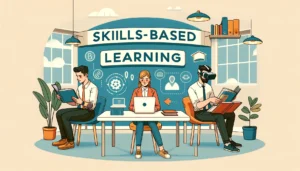The gift of youth can be a barrier for older workers
- 5 Min Read
Pablo Picasso once said that ‘youth has no age’ – however that certainly doesn’t ring true in the workplace.
- Author: Carina Schofield
- Date published: Jun 7, 2019
- Categories

In recent years, recruiters have been tearing their hair over ways to attract ‘fresh young blood’, leading to an overt emphasis on investing in, training and developing, generation Y; a generation perceived to be technologically savvy, bursting with creativity and competitive in terms of advancement.
Yet this has led to the unfair situation where millennial-centric cultures often stand in the way of a more balanced approach to recruitment, to the detriment of older workers.
Research from Hult International Business School has suggested that despite over 50s now wanting to work well beyond conventional retirement age and coming with a wealth of experience, there is a common covert bias towards not recruiting them.
Misconceptions about baby boomers
Such bias is often based on unfounded assumptions that question the contribution older people can make.
For example, there is often a misconception that those who haven’t grown up in the digital age will not be sufficiently IT savvy, or that they will be closed to new approaches and learning new skills.
It is widely perceived that over-50s are focused on heading for retirement and unlikely to champion change (so not committed to the long-term direction of a company) or wedded to a traditional, 9-5 way of working.
A focus on recent achievements during the hiring process is certainly working against older people, by failing to take the full breadth of their experience into account. For example applications forms ask for last 10 years of experience only – this excludes a huge amount of Baby Boomer career experience. Some over-50s we spoke to even tried to avoid putting their age on their CV/application because they felt it put them at a disadvantage.
Enormous benefits
There’s clear evidence to show that mature workers will have a key role to play in the future workforce, due to a combination of demographic trends and skills shortages. This aside, there are other enormous benefits to having a multi-generational cohort of employees.
A mix of younger and older workers will result in more diverse skills being brought to the table and in many cases will better reflect a company’s customer-base. Neglecting this is a serious issue for organisations, which will fall behind in the talent stakes and struggle to remain competitive if they fail to build more age-diverse workforces.
One of the biggest concerns for the worldwide organisations is also the issue of retention of young people. Compared to the past, they see that graduates have little patience with a job and will leave quickly if they feel it doesn’t meet their own personal ideals. In contrast baby boomers now need – and many actively want – to work well beyond conventional retirement age. They are often up for new challenges and make loyal, conscientious employees who may well stay longer than the younger generation.
The idea that over-50s lack a desire for flexibility and new ways of working is also simply not true. Work/life balance is also very much in the minds of both older workers and graduates, not just the younger generation. Graduates do not ‘live to work’ and want both interesting work and plenty of leisure time. Baby Boomers are also seeking more leisure, often having worked hard since leaving school/university, often burned out with stress.
Recommendations
Companies need to make a concerted effort to tackle ageism, which is alive and well in the workforce. HR needs to urgently consider just how youth-focused their organisation is and what can be done to redress the balance.
So what employers can do to tackle ageism, root out unconscious bias and make their recruitment practices more Baby Boomer friendly?
- Conduct a strategic review for how best to adapt the organisation for a multigenerational, multi-cultural workforce in an age of rapid change and changing attitudes to work. Make sure it supports all age groups and does not focus on just one.
- Although companies do need to modify recruiting, managing and retaining processes to cater for Generation Y, it is important to remember there is a multigenerational workforce. The same guidance provided for Gen Y should be the same guidance for ALL generations when it comes to recruiting.
- It is important to match expectations to reality during the recruitment process, regardless of age. One way to do this is to identify qualified candidates of all ages with screening questions and simulated tasks to that directly relate to the job requirements. This process will help to ensure quality candidates for the specific vacancy and work to eliminate those people who are not the right fit, no matter how old or young they are.
- Recruit for culture and work ethic as priority. Organisations that prioritise cultural fit over other ‘qualifications’ for the job during recruitment, are sure to find that their employees stay longer. What aspects of the culture are deeply embedded in the employees and important for success?
- Be more open to exploring new job formats. Job shares between those of different ages with different family commitments and time requirements can work really well. In fact, an older worker is often the ideal job share partner for someone with a young family who needs flexibility during the school holidays.
- Graduates reported in Ashridge research that they admire managers for their experience and support. They value people who listen to them, operate an open-door policy and are available when they need them. In particular gen y are looking for coaches and mentors, so this is a role more experienced workers can play in helping to nurture the next generation.
- Businesses also need to root out unconscious bias and make sure that managers are not rejecting older workers because they feel they are overqualified, or too close to retirement to make it worth taking them on. There is a tendency for organisations to focus on race and gender when they consider unconscious bias – it’s time we added age to the list.









